
Alternative Dance pioneers who fused electronic sounds and dance club rhythms to an indie rock aesthetic, proving dance music could be sophisticated and taken seriously. Formed by the remaining members of Joy Division in 1980 after the suicide of Ian Curtis, New Order at first struggled to emerge from the post-punk shadow of their prior success. After spending time in the post-disco club scene of New York in the early ’80s, the band incorporated these influences into their sound and found a new identity. Their 1983 hit, “Blue Monday,” became the best-selling 12″ single of all time. For the next ten years, New Order put out a string of accomplished albums and singles that were beloved in dance clubs, critically acclaimed, and often successful on the pop charts as well. The band went on hiatus in 1993 while their members pursued other projects. They’ve reunited twice since to tour and release new music, the second time without founding member Peter Hook.
Details
- Years Active: 1980-1993, 1998-2007, 2011-Present
- Peak Success: 1983-1993
- Origin: Manchester, England, United Kingdom
- Styles/Movements: Alternative Dance, Post-Punk
- Labels:
- Factory [1980-1990; UK]
- London [1993-2007; UK]
- Qwest [1985-1995; US]
- Reprise [2001; US]
- Warner Bros. [2005; US]
- Rhino [2011-2013]
- Mute [2015-2020]
- Core Members:
- Bernard Sumner (vocals/guitar/keyboards/programming)
- Peter Hook (bass/keyboards/programming) [1980-2007]
- Stephen Morris (drums/keyboards/programming)
- Gillian Gilbert (keyboards/guitar/programming) [1980-2001, 2011-Present]
- Phil Cunningham (guitar/keyboards) [2001-Present]
- Tom Chapman (bass/keyboards) [2011-Present]
- Spotify monthly listeners: 5,233,020 (as of Oct 9, 2021)
- Links: Website | Youtube | Spotify | Wikipedia | Allmusic
Playlist
Music Videos
History
Joy Division
Childhood friends Bernard Sumner and Peter Hook decided to form a band after seeing the Sex Pistols play a gig in Manchester on June 4, 1976. Hook bought a bass and Sumner a guitar. They placed an ad in a record shop for a singer and Ian Curtis responded to it. The band chose the name Warsaw and started playing gigs around Manchester. After going through two drummers, another ad was placed and Stephen Morris joined the band in August 1977. The foursome changed their name to Joy Division in early 1978. Rob Gretton became the band’s manager around the same time and later that year they signed with Tony Wilson’s newly created Factory Records.
Joy Division’s debut album, Unknown Pleasures, recorded with producer Martin Hannett, became an indie hit in the UK upon release in June 1979. The band toured the country and Europe, raising their profile further, before commencing work on their second album, Closer, in March 1980. Through all this, Ian Curtis was increasingly struggling with epileptic seizures (sometimes even while performing onstage), depression and a crumbling marriage. On May 18, the night before Joy Division were to leave for their first tour of the US, Curtis hanged himself at home in Manchester. A month later, new single “Love Will Tear Us Apart” went to #13 in the UK and Closer peaked at #6 when released in July.
Movement
Devastated by the loss of their friend, Hook, Morris and Sumner were unsure about whether to carry on. Manager Rob Gretton was the one who persuaded them to keep going, telling them to write some new songs and he’d go ahead and book them some gigs. The grieving trio decided they would no longer play any Joy Division songs and they would need a new name, having previously agreed not to continue as Joy Division if any member left the band. They wrote a handful of new songs, with each of the members taking a turn at vocals, and played their first gig on July 29, 1980 at Manchester’s Beach Club, just two months after the death of Curtis.
Soon afterward, Gretton suggested the name New Order after reading an article in The Guardian titled “The People’s New Order of Kampuchea.” While in America to play a few shows in September, the newly named band made their first studio recording, a song called “Ceremony,” which had originally been written, performed a few times and even worked on in studio with Curtis prior to his death. Sumner sang vocals on the track and the band soon decided he should take on that role permanently. The only challenge was that the guitarist had a hard time playing his instrument and singing at the same time. Upon returning to Manchester, the group decided to add a fourth member, Gillian Gilbert, who Morris had just begun dating. Gilbert could cover the guitar parts while Sumner was singing and also play keyboards. The foursome made their live debut on October 25th at the Squat in their home base of Manchester.
The version of “Ceremony” recorded by Sumner, Hook and Morris while in the US was released as New Order’s first single (a 7″) in January 1981. The B-side, “In a Lonely Place”, was another song that had been written and even demoed with Curtis. Unsurprisingly, both tracks sound strongly of Joy Division, with Sumner’s vocals faithfully following the template laid down by his former bandmate. When a 12″ single was released in March (with the same mix of “Ceremony” but a longer version of “In a Lonely Place”), it topped the UK Indie charts and made it to #34 on the pop charts. The song was re-recorded in 1981 after Gilbert joined the band and the 4-member version was released in September of that year. This version is included on the Substance compilation (1987). The original trio version wasn’t included on any LP until Singles in 2005.
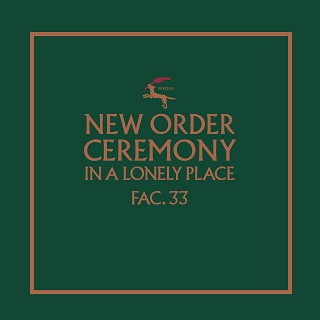
Source: Wikipedia
| Song | Release Date | UK Singles | UK # of Weeks on Chart | UK Indie Singles | US Dance Club Songs | Spotify Listens* |
|---|---|---|---|---|---|---|
| Ceremony (7″ / 12″) | January 1981 / March 6, 1981 | 34 | 5 | 1 | 61 | 29,141,291 |
Other bands might have taken the time to find themselves before sharing anything with the world, but New Order continued to write music, play gigs and record new songs while in the midst of sorting out their identity. “Procession” was released as the band’s second single in September 1981 and matched “Ceremony” by topping the Indie singles chart and climbing inside the top 40 on the pop charts. Again, it sounded like a continuation of the Joy Division sound without breaking much new ground.

Source: Wikipedia
| Song | Release Date | UK Singles | UK # of Weeks on Chart | UK Indie Singles | Spotify Listens* |
|---|---|---|---|---|---|
| Procession | September 1981 | 38 | 5 | 1 | 2,962,405 |
Movement, the first New Order studio album, was released two months later, full of songs that the band had written in the past 12 months. They again recorded with Martin Hannett who had produced all the Joy Division recordings and the “Ceremony” and “Procession” singles—which were not included on the LP. Hannett was as responsible for the iconic Joy Division sound as any of the band members, creating a sparse otherworldly and industrial atmosphere on record that was far starker than the band sounded live on stage. By this point, however, the producer was struggling with alcohol and substance abuse and his working relationship with the band became more strained than ever.

| Album | Release Date | UK Albums | UK # of Weeks on Chart | UK Indie Albums | Producer |
|---|---|---|---|---|---|
| Movement | November 13, 1981 | 30 | 9 | 1 | Martin Hannett |
Movement sounded like a band in transition, clearly connected to the iconic post-punk sound of Joy Division but taking steps into an uncertain new direction. As a result, they pleased almost no one. Joy Division fans found it derivative of the band’s former greatness, while anyone looking for something boldly new were disappointed as well. The LP peaked at #30 in the UK, whereas a month earlier the Joy Division rarities compilation Still had made it to #5. No singles were released from the album, but opening track “Dreams Never End,” with its classic Joy Division sound of vocals-guitar-bass-drums, has become one of their more listened to songs on Spotify.
| Song | Spotify Listens* |
|---|---|
| Dreams Never End | 11,892,678 |
Though exceedingly difficult to work with, Hannett did two very important things for New Order that would prove to be key to their future success. Always intrigued by new music technology, Hannett encouraged the band to start using synthesizers and drum machines on Closer. Then during the recording of Movement, Hannett showed them how to use a mixing board.
“Everything’s Gone Green,” which was one of the last songs worked on during the Movement sessions, features the band using both of these new skills to tremendous effect. A sequencer riff prominently serves as a core part of the song, interplaying with the drums, bass, guitar and vocals. The band loved the result, choosing an edited version for the B-side to the “Procession” single and then releasing the full song as a single in Belgium in December 1981. It would also end up being the last recording the band worked with Martin Hannett on, with Bernard Sumner explaining [Hannett] “walked out halfway through the mix because Hooky and me asked him to turn the drums up.”

Source: Wikipedia
| Song | Release Date | UK Indie Singles | US Dance Club Songs | Spotify Listens* |
|---|---|---|---|---|
| Everything’s Gone Green | December 1981 | 3 | 64 | 3,195,873** |
**Combined streams of 7″ and 12″ version
After finishing work on Movement and the singles, New Order went back on tour around the UK and then over to America. Experimenting further with their sequencers, the band started testing out a new song, “Temptation,” that built on what they learned from “Everything’s Gone Green.” Video of their November 19, 1981 concert at the Ukrainian National Home in New York shows a primordial version with unfinished lyrics. The band continued to refine the song, playing a more finished version on the BBC in January 1982, before recording it on their own (their first time working without Hannett as producer) and releasing it in May 1982 as a non-LP single. Already a live show favorite, “Temptation” charted slightly higher and stayed on the charts longer than their previous singles, proving to the band they had hit on the right direction for their sound. Morris later confirmed this, saying “It was really when Joy Division fans didn’t like what we were doing, like with ‘Everything’s Gone Green’ and ‘Temptation’ that we knew we’d hit on something.”
(For the Substance compilation in 1987, “Temptation” was re-recorded. By this point in their career, Sumner was a much more confident vocalist and the band were more accomplished at using their new technology. The new version sounds like a mid-career New Order song, whereas the 7″ original version on the Singles compilation is the sound of a raw and inspired younger band.)

Source: Discogs
| Song | Release Date | UK Singles | UK # of Weeks on Chart | UK Indie Singles | US Dance Club Songs | Spotify Listens* |
|---|---|---|---|---|---|---|
| Temptation | May 10, 1982 | 29 | 7 | 1 | 68 | 31,856,479** |
**Combined streams of 7″, 12″ and re-recorded Substance version
On May 21, 1982, inspired by the clubs they had visited while in New York, joint owners Factory Records, Rob Gretton and New Order opened The Hacienda in Manchester. A former boat showroom, the Hacienda was a massive operation, with multiple levels and a state-of-the-art sound system. It was also way ahead of its time. For the first five years of its existence, the club lost heaps of money and stood largely empty most nights of the week.
Factory Records put together a compilation EP entitled 1981-82 that collected “Procession,” “Everything’s Gone Green,” and “Temptation” along with two B-sides (“Mesh” and “Hurt”) to release in America, where New Order records were only available as imports. The EP also made it to #4 on the UK Indie Albums chart.

Source: Discogs
| Album | Release Date | UK Indie Albums |
|---|---|---|
| 1981-1982 | November 1982 | 4 |
“Blue Monday” and Power, Corruption & Lies
New Order spent most of 1982 playing shows in Europe and recording their second album. Without Hannett telling them what to do, the band was free to experiment with synthesizers and sequencers to their hearts’ content. Gilbert claimed that much of their understanding of how to use sequencers came from Bernard and Stephen recording farts.
The use of these pre-programmed sequencers offered an opportunity for the band to solve one of their challenges: a hatred of encores. They thought that if they could write an encore song that could play itself, the band could leave the stage while it continued and be the first to the bar. However, the song they were creating became far more important than that.
“Blue Monday” is the band’s signature song and one of the most influential recordings of all time. The song became and still is the highest selling 12″ single worldwide. While DJs had always preferred the 12″—a larger disc which allowed for extended versions of songs—artists hadn’t taken the format too seriously, usually relying on drum fills or repeated intros to lengthen the 7″ version. New Order made the 12″ an artform, creating intricate and purposeful recordings that routinely ran between six and eight minutes.
The song starts with a kick drum beat from a drum machine, before a sequencer melody fades in. In a 2013 interview with the Guardian, Gilbert explained, “The synthesizer melody is slightly out of sync with the rhythm. This was an accident. It was my job to programme the entire song from beginning to end, which had to be done manually, by inputting every note. I had the sequence all written down on loads of A4 paper Sellotaped together the length of the recording studio, like a huge knitting pattern. But I accidentally left a note out, which skewed the melody.” A bassline from a Moog synthesizer soon joins the drums and sequencer, followed by Hook’s lead bassline using a melody he took from Ennio Morricone’s soundtrack for the spaghetti western For a Few Dollars More. Finally, after 2 minutes of intro, Sumner begins singing in a seemingly emotionless monotone.
An equally important part of the “Blue Monday” lore is its packaging. Peter Saville had created the album art for both of Joy Division’s albums and had continued to design the art for New Order. While visiting the band in the studio, Saville saw a floppy disc for the first time and asked if he could have one along with the new single. He created packaging that replicated the disc, including die-cut sections that exposed a silver inner sleeve. The strip of color on the right edge is a code that spells out “FAC 73 BLUE MONDAY AND THE BEACH NEW ORDER.” The original design was so expensive to produce that Factory lost money on every copy sold—something nobody thought would be a problem if they didn’t sell many as expected. Later pressings used a modified design that was cheaper to make.
Released in March, “Blue Monday” topped the Indie charts like New Order’s other singles, but it also rose to #12 on the pop charts six weeks after its release, one spot higher than Joy Division’s “Love Will Tear Us Apart” peaked at in 1980. The hit made its way over to the US and made it to #5 on the Dance Club Songs chart, far higher than their earlier singles.

The band made their debut on Top of the Pops with “Blue Monday” on March 31st. Sticking to their indie roots, they insisted on playing and singing the track live, in contrast to the mostly mimed performances usually seen on the program. The result was less than perfect: the samplers went awry and Sumner’s vocals weren’t in peak form. You can see the band look at each other with embarrassment at the end, knowing it wasn’t their finest performance. It didn’t ultimately matter though. After staying on the charts for six months, the song started climbing again and earned the band their first Top 10 hit, peaking at #9 on October 15.
| Song | Release Date | UK Singles | UK # of Weeks on Chart | UK Indie Singles | US Dance Club Songs | Spotify Listens* |
|---|---|---|---|---|---|---|
| Blue Monday | March 7, 1983 | 9** | 74 | 1 | 5 | 231,330,977 |
**Initially peaked at #12 in April 1983, then later climbed to #9 in October 1983.
Arriving two months after “Blue Monday,” New Order’s second album, Power, Corruption & Lies entered the charts at #4—higher than any previous Joy Division or New Order LP—and stayed on for the next six months. The UK version of the album didn’t include the band’s hit single, however, which also helped keep sales of the 12″ robust.
Power, Corruption & Lies fully buried the ghost of Joy Division in a way that Movement didn’t. It is from beginning to end the sound of a new band with its own unique identity. It’s also the sound of cutting edge musical inspiration and innovation. The technology is still rudimentary and the band’s skill at using it is still advancing, but the creativity with which they weave electronics and dance rhythms into post-punk rock songs was revolutionary and influenced all dance and indie electronic music to come. The album has been included on numerous Best Of lists, including NME, Rolling Stone, and Pitchfork.
Peter Saville again provided the cover art, which is a Henri Fantin-Latour painting titled “A Basket of Roses” that Saville had seen on a postcard in the National Gallery. Because the original was out on loan, the museum wouldn’t allow its reproduction initially. When Factory Records boss Tony Wilson asked who owned the painting, the answer was the people of Great Britain. Wilson countered by saying “I believe the people want it,” and the museum changed their position.

Source: Wikipedia
| Album | Release Date | UK Albums | UK # of Weeks on Chart | UK Indie Albums | UK Sales | Producer |
|---|---|---|---|---|---|---|
| Power, Corruption & Lies | May 2, 1983 | 4 | 83 | 1 | Silver* | New Order |
“Age of Consent,” the opening track on the LP, is one of the band’s most popular songs (their third most listened to on Spotify), despite never having been released as a single. It opens with an upbeat Peter Hook bassline and is one of the most traditional rock tracks on the album. Wheras “Your Silent Face” heavily featured synthesizers and sequencers, becoming a live show favorite as fans exuberantly sang along to its final lyric: “so why don’t you piss off.”
| Song | Spotify Listens* |
|---|---|
| Age of Consent | 82,937,290 |
| Your Silent Face | 15,860,125 |
While touring the US in the summer of 1983, New Order teamed up with Arthur Baker, a New York-based producer who had made waves with his work the previous year on Afrika Bambaataa’s iconic “Planet Rock”, to record their next single. “Confusion” would drop in August and its immediate success fueled the resurgence of “Blue Monday” on the UK pop charts. Baker’s influence is noticeable on “Confusion” but it also proves how dance music innovators were as enamored with New Order as clubgoers. The song gave the band its second straight #5 placing on the US Dance Club Songs and matched the initial peak of “Blue Monday” at #12 in the UK, bringing the earlier single back up the charts and into the Top 10.
The band started writing another song with Baker during the “Confusion” sessions but didn’t record it at the time. Back in the UK in December, they finished work on the song and put it to tape. “Thieves Like Us“—another otherworldly tune with bright synths, danceable beats, memorable basslines, and happy-sad vocals—was released as a single in April 1984 and gave New Order their third straight top 20 single in the UK. Another synth and sampler heavy track, the band sounds more authentically joyous than they had on “Blue Monday” or anything on Power, Corruption & Lies. The band made their return to Top of the Pops in May and turned in a much better performance this time around.
Despite the band’s earlier success in American dance clubs, “Thieves Like Us” didn’t receive a US release. Factory Records’ inability to consistently promote their charges internationally had frustrated the band and led to them signing a deal in 1985 with Quincy Jones’s Qwest Records to release their music in the US.
“Murder,” which the band recorded in 1982 during sessions for Power, Corruption & Lies, was released as a single in Belgium in May 1984. Imports of the single were strong enough for it to chart on the UK pop (#94) and indie charts (#2).

Source: Wikipedia
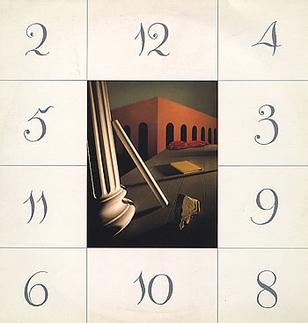
Source: Wikipedia
| Song | Release Date | UK Singles | UK # of Weeks on Chart | UK Indie Singles | US Dance Club Songs | Spotify Listens* |
|---|---|---|---|---|---|---|
| Confusion | August 1983 | 12 | 7 | 1 | 5 | 1,311,094** |
| Thieves Like Us | April 1984 | 18 | 5 | 1 | – | 6,978,544*** |
**Combined streams of the 12″, Substance re-recorded version and Singles edit
***Combined streams of the 12″ and 7″ versions
Low-Life
After touring the UK and Europe in the first half of 1984, New Order began work on their third studio album, spending the rest of the year out of the spotlight. By January 1985, they resumed touring the UK with their new batch of songs ahead of the release of their new album in May.
If Power, Corruption & Lies was New Order experimenting with synths and samplers to gorgeous effect, Low-Life is the album in which they show off their newfound mastery of the technology. As Melody Maker wrote, the band had “reached the point where their fusion of rock and electronics became seamless.” While the songs again span the spectrum from electronica to rock, giving each band member and their instrument a chance to shine, all of them sound more polished and assured than the previous LP. The band also made two important concessions to commerciality: they included lead single “The Perfect Kiss” on the album and they featured pictures of the band in the jacket—with Morris featured on the cover.
Low-Life entered the UK charts in May 1985 at #7, slightly lower than Power, Corruption & Lies, but it was still their second consecutive top 10 entry, a serious achievement at the time for an alternative band on an independent label. The LP also cracked the US album charts in June, another first for the band.

Source: Wikipedia
| Album | Release Date | UK Albums | UK # of Weeks on Chart | UK Indie Albums | US Albums | US # of Weeks on Chart | Producer |
|---|---|---|---|---|---|---|---|
| Low-Life | May 13, 1985 | 7 | 10 | 1 | 94 | 22 | New Order |
Despite all the critical acclaim, New Order lost pop relevance for a little bit. Their singles continued to top the Indie charts and ruled dance clubs around the world, but they didn’t reach the same heights on the UK pop charts nor did they crack the US mainstream. After “Blue Monday” brought them a premature brush with fame, it would take a few years for the band to steadily lay the groundwork for dance music to consistently land in the mainstream.
“The Perfect Kiss” was released as a single at the same time as Low-Life. A high-energy, dancefloor-ready tune, the 12″ version runs for almost nine minutes, while a shorter edit was included on the LP instead. Arriving over a year after their last UK single, the song ended New Order’s streak of Top 20 singles by peaking at #46, although it still did well on the US Dance charts.
“Sub-culture” was also released as a single off the album, albeit in a 12″ remixed version by John Robie that differed significantly from the LP version (chiefly the addition of soulful backing vocals). The song charted lower than “The Perfect Kiss” on both the UK pop and US dance charts. Peter Saville found the single lacking and refused to create artwork for it, hence the black sleeve.
Among the album tracks on Low-Life, “Love Vigilantes” is another sublime Track 1 that easily could have been a single. It’s the most traditional-sounding song on the LP and one of its sunniest, despite being about a deceased soldier returning home as a ghost to visit his wife. “Elegia,” a purely instrumental album track, is actually an edit of a 17.5 minute version the band wrote as a tribute to their former bandmate, Ian Curtis. The song has been featured on the soundtracks of various films (Pretty in Pink), tv shows (Stranger Things, The Crown) and video games (Metal Gear Solid).—which has led to it being the most listened to track off the LP on Spotify.
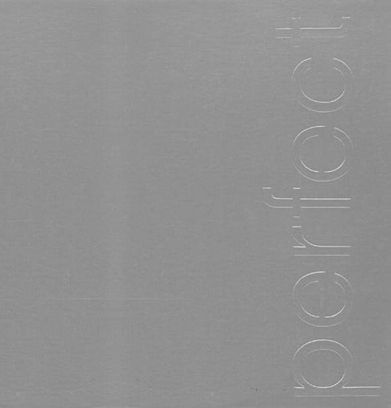
Source: Wikipedia
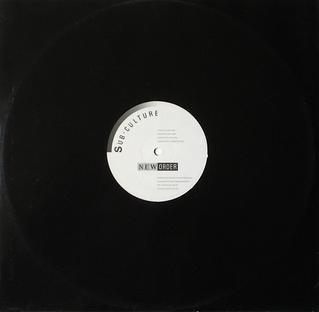
Source: Wikipedia
| Song | Release Date | UK Singles | UK # of Weeks on Chart | UK Indie Singles | US Dance Club Songs | Spotify Listens* |
|---|---|---|---|---|---|---|
| The Perfect Kiss | May 1985 | 46 | 4 | 1 | 5 | 11,474,466** |
| Sub-culture | October 28, 1985 | 63 | 4 | 1 | 35 | 4,432,949** |
| Love Vigilantes | – | – | 0 | – | – | 11,188,068 |
| Elegia | – | – | – | – | – | 19,441,195 |
**Combined streams of Low-Life, Substance and 7″ versions
At the same time Low-Life was released, New Order toured Asia and the Pacific for the first time, playing concerts in Hong Kong, Japan, Australia and New Zealand, before returning to play more gigs in the UK and a month of shows in the US. The band stayed in the UK throughout the end of 1985 and early 1986, trying out new songs at live shows and beginning to record their next studio album.
A new song co-written and co-produced with John Robie, “Shellshock,” was included on the Pretty in Pink soundtrack in February, then released as a single a month later. The 7″ was the same as the version on the soundtrack, while the 12″ was a remixed version running almost 10 minutes. The non-LP single charted higher in the UK (#28) than any of the singles off Low-Life. “Elegia” and and instrumental version of “Thieves Like Us” can also be heard in the Pretty in Pink film, but not on the soundtrack.

Source: Wikipedia
| Song | Release Date | UK Singles | UK # of Weeks on Chart | UK Indie Singles | US Dance Club Songs | Spotify Listens* |
|---|---|---|---|---|---|---|
| Shellshock | March 17, 1986 | 28 | 5 | 1 | 14 | 3,557,392** |
**Combined streams of 7″ and Substance versions
Brotherhood
To a listener, New Order albums had always found a way to perfectly balance the two sides of their persona: post-punk rock and electronic dance. But this wasn’t an effortless task. Sumner and Hook, in particular, were drifting in different directions, the former towards electronica and the other staying firmly in rock music. For their next album, Brotherhood, New Order decided to split the record into those two parts. Side A is the rock side and Side B is the dance side.
Brotherhood debuted at #9, New Order’s third straight Top 10 entry, but the album only lasted five weeks on the charts, half as long as Low-Life. It also charted lower in the US than its predecessor. Critics continued to applaud the band’s work, appraising them as at the top of their game. That said, few in retrospect pick this LP as their favorite of the band’s work, and none of the songs other than “Bizarre Love Triangle” are much listened to on Spotify. Again, while New Order ruled the indie charts and the dance clubs, the enduring pop success that “Blue Monday” seemed to foreshadow remained elusive. But not for much longer.
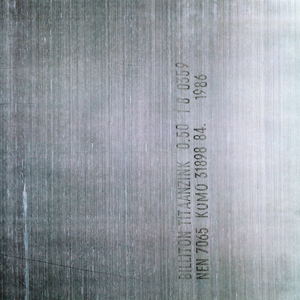
Source: Wikipedia
| Album | Release Date | UK Albums | UK # of Weeks on Chart | UK Indie Albums | US Albums | US # of Weeks on Chart | Producer |
|---|---|---|---|---|---|---|---|
| Brotherhood | September 29, 1986 | 9 | 5 | 1 | 117 | 21 | New Order |
After a detour into conformity on Low-Life, New Order went back to their indie ethos and left lead single, “State of the Nation,” off the vinyl version of Brotherhood, although it was included on the CD version (the dance side). The single made it to #30 in the UK and returned New Order to the Top 5 on the US Dance charts. The 12″ version is twice as long as the 7″ and includes an extra verse.
Second single, “Bizarre Love Triangle,” would become one of the band’s signature songs, but it wasn’t an immediate success everywhere. The single didn’t crack the Top 50 in the UK or chart at all on the US Hot 100, although it again made the Top 5 of the US Dance charts. But it unexpectedly made it to #5 in Australia and would grow in popularity everywhere over time as the band regularly included it in their live shows. Rolling Stone would in 2004 include it in their list of the 500 Greatest Songs of All Time. The album version of the song was remixed by Shep Pettibone for the 12″ and 7″ singles, adding more danceable electronic touches. Everything on the song except for Sumner’s vocals and some Hook basslines was sequenced.
None of the rock tracks from Side A were released as a single or became big hits for the band. “Paradise,” the first track on the LP, shows how the band could still excel at this kind of music too when they put their minds to it.

Source: Wikipedia

Source: Wikipedia
| Song | Release Date | UK Singles | UK # of Weeks on Chart | UK Indie Singles | US Singles | US Dance Club Songs | Spotify Listens* |
|---|---|---|---|---|---|---|---|
| State of the Nation | September 27, 1986 | 30 | 3 | 1 | – | 4 | 1,520,953** |
| Bizarre Love Triangle | November 3, 1986 | 56 | 2 | 1 | 98*** | 4 | 98,714,635**** |
| Paradise | – | – | – | – | – | – | 1,271,406 |
**Combined streams of 7″ and 12″ versions
***Charted for 2 weeks in 1995 after the release of (The Best of) New Order
****Combined streams of 7″, 12″ and Brotherhood versions
Substance
After years of financial losses, the Hacienda’s fortunes began to change in 1986 when they started dedicating nights to playing house music. Despite the genre being American in origin, originating in dance clubs first in Chicago and then New York, the British public embraced the music more widely. While the music was still confined to clubs in the US, “Love Can’t Turn Around” by Farley “Jackmaster” Funk broke into the UK Top 10 in September 1986, and “Jack Your Body” by Steve “Silk” Hurley topped the charts at #1 in January 1987. The Hacienda started selling out by early 1987, and Manchester’s profile as being at the cutting edge of music rose to new heights.
Often bands who pioneer a new style of music aren’t still around to receive their due when the music breaks into the mainstream. New Order, who had been instrumental at warming up the UK to dance music, were very much still around, however, and wouldn’t miss out on this opportunity. Leaving behind their post-punk side for the time being, the band committed itself to danceable pop hits for the next few years. A new single, “True Faith,” was released in July 1987 and became a major hit, peaking at #4 in the UK and at #32 in the US—their first appearance on the Hot 100. The song was co-produced with Stephen Hague, who had just helped the Pet Shop Boys with their debut album, Please. A bizarre music video proved popular on MTV and helped the song climb the charts in the US.

Source: Wikipedia
| Song | Release Date | UK Singles | UK # of Weeks on Chart | US Singles | US # of Weeks on Chart | US Dance Club Songs | Spotify Listens* |
|---|---|---|---|---|---|---|---|
| True Faith | July 20, 1987 | 4 | 11 | 32 | 18 | 3 | 18,459,650** |
**Combined streams of 7″ and 12″ versions
A month later, the Substance compilation arrived, featuring all of the band’s major singles on two vinyl discs. Most of these songs had only ever previously been available individually on 7″ or 12″ singles and were hard for new fans to find, especially in the US. For the compilation, the band elected to highlight the longer 12″ versions of these songs that they had put so much effort into and that been so influential in the dance world.

Source: Wikipedia
- “Everything’s Gone Green,” “Blue Monday,” “Thieves Like Us,” “State of the Nation,” “Bizarre Love Triangle,” and “True Faith” are all featured in their original 12″ recordings.
- “Sub-culture,” “Shellshock”, and “The Perfect Kiss” (CD only) are included as edits made from the 12″ versions specifically for Substance due to time constraints.
- “Ceremony” is the version recorded after Gillian Gilbert joined the band.
- “Temptation” and “Confusion” were re-recorded in new versions for this release.
CD, cassette, and DAT versions of Substance featured all these songs on disc/tape one and then had a second disc/tape consisting of B-sides. Although they had been released as singles like the other tracks on disc one, “Procession” and “Murder” were included on this supplemental disc/tape instead.
Released simultaneously with the Joy Division compilation also titled Substance, New Order’s compilation entered the UK charts at #3, higher than any of their previous albums. Within six months, it had climbed to #36 in the US. The compilation would be certified Platinum in both countries within a few years and remains the band’s highest selling album in their career. Rolling Stone later included the LP on its list of the 500 Greatest Albums of All Time.
| Album | Release Date | UK Albums | UK # of Weeks on Chart | UK Sales | US Albums | US # of Weeks on Chart | US Sales |
|---|---|---|---|---|---|---|---|
| Substance | August 17, 1987 | 3 | 40 | Platinum* | 36 | 60 | Platinum** |
**Certified Gold in February 1988 and Platinum in January 1991
With Substance on shelves around the world, New Order continued to put out new singles that kept the band near the top of the charts for the next year. “Touched by the Hand of God” was released in December 1987 after having been on the soundtrack for the comedy film Salvation! The song gave the band another Top 20 single in the UK, and also topped the US Dance Club charts for the first time in the band’s career. Kathryn Bigelow (future Oscar winner for The Hurt Locker) directed the music video, which featured the band dressed and hilariously performing like the members of a hair metal band. The band performance is intercut with another storyline featuring actor Bill Paxton.
A new version of the band’s breakthrough hit, remixed by Quincy Jones and titled “Blue Monday ’88,” dropped in April 1988 and went to #3 in the UK, one spot better than “True Faith.” The single again topped the US Dance Club Songs chart, and even made it on to the Hot 100 singles chart as well. The band recorded a music video for their iconic hit this time, not having bothered to for the original 1983 release.
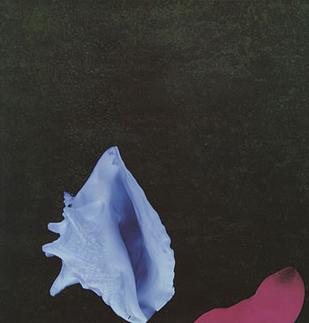
Source: Wikipedia

Source: Wikipedia
| Song | Release Date | UK Singles | UK # of Weeks on Chart | US Singles | US # of Weeks on Chart | US Dance Club Songs | Spotify Listens* |
|---|---|---|---|---|---|---|---|
| Touched by the Hand of God | December 7, 1987 | 20 | 9 | – | – | 1 | 2,146,771** |
| Blue Monday ’88 | April 25, 1988 | 3 | 11 | 68 | 10 | 1 | 81,298,049** |
**Combined streams of 7″ and 12″ versions
Technique
New Order spent the summer of 1988 in the Mediterranean vacation destination of Ibiza. They were supposed to be there recording their next album, but the sunshine, clubs and drugs received more of the group’s attention than the recording studio. After several months with little recorded, the band regrouped back in the UK to finish up work. There would be no split between rock and dance on the next record. Having spent the summer listening to Balearic beat in Ibiza and with Acid House continuing to flourish in the UK, New Order went all in on making a full-on dance album. Peter Hook would joke about the recording process, calling it “an epic power struggle between the sequencers and me. I was resisting it valiantly, because I still wanted us to be a rock band.”
The band was able to forestall arguments over their musical direction by dividing and conquering. Gilbert spoke about the recording process as “the beginning of us not being together in the studio when we were doing things. It was like, ‘oh you do your drums today, and I’ll do the vocals tonight…’ The songs were sort of there but there were huge chunks missing. You’d leave blocks and say, ‘will you fill that in? I’m off now.'”
Technique, New Order’s fifth studio album, arrived at precisely the right moment. Along with the Hacienda’s newfound success, several clubs in London opened that also promoted what was now being called acid house music. The term came from the squelchy sound created by the Roland TB-303 bass synthesizer, which featured prominently on many of these songs. Simultaneous with the rise in popularity of acid house was the arrival of the drug MDMA (aka ecstasy or molly), which became the drug of choice for late ’80s British youth. Massive free parties were arranged in empty warehouses and fields for thousands, and the phenomenon was soon labeled “rave culture” by the UK press. The summer of 1988 was dubbed “the Second Summer of Love” and Technique arrived as the UK was captivated by this countercultural movement that would carry over into the summer of 1989.

Source: Wikipedia
The album debuted at #1, the band’s first chart-topper in the UK, and was certified Gold within a week, another first for the band. In fact, the success of the new LP also drove sales of Substance, which shot to Platinum status the same week. In the US, the album hit #32, the band’s highest spot yet, and was also certified Gold. Reviews were universally positive, and the LP was included on NME‘s greatest of all time list.
| Album | Release Date | UK Albums | UK # of Weeks on Chart | UK Sales | US Albums | US # of Weeks on Chart | US Sales | Producer |
|---|---|---|---|---|---|---|---|---|
| Technique | January 30, 1989 | 1 | 14 | Gold | 32 | 28 | Gold* | New Order |
“Fine Time” was released as a single in November 1988, ahead of the album’s release. It was New Order’s most high energy, frenetic song yet, showing the influence their summer in Ibiza had had on the band. There are barely any lyrics in the song; it’s mostly sequenced bass lines and beats and other electronic touches and eventually the sounds of farm animals. The song peaked at #11 in the UK, the band’s fourth straight Top 20 single in the UK. On the newly created US Modern Rock Tracks chart (later changed to Alternative Songs and now known as Alternative Airplay), the song hit #3.
Second single, “Round & Round,” just missed the Top 20 in the UK, but returned New Order to the US Hot 100 at #64. The 7″ single was co-produced by Stephen Hague and plays up more the melody lines than the album version, which emphasizes the drum and bass. The song is about the band’s growing frustration with Factory Records boss Tony Wilson.
When album track “Run” was remixed by Scott Litt and released as the third single, it was retitled “Run 2.” The single only charted in the UK, and was the subject of a lawsuit from John Denver’s publishing company. The guitar break in the song was alleged to be too similar to “Leaving on a Jet Plane.” The case was settled and the song is now credited to the members of New Order and John Denver.
“Vanishing Point” was considered for a single but never released as one. It became a fan favorite and is the most listened to track from the album on Spotify.
New Order toured relentlessly in support of Technique. The band started in South America in the fall of 1988, before returning to tour the UK and France from December to March 1989, and then embarking on a nationwide US tour from April to July. In late August, the band headlined the first night of the Reading Festival back in the UK. It would turn out to be their last live performance for four years.
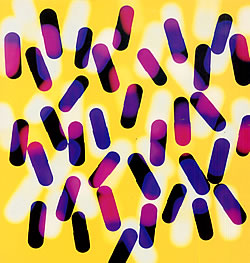
Source: Wikipedia
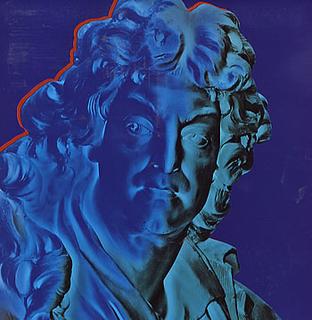
Source: Wikipedia

Source: Wikipedia
| Song | Release Date | UK Singles | UK # of Weeks on Chart | US Singles | US # of Weeks on Chart | US Alternative Airplay | US Dance Club Songs | Spotify Listens* |
|---|---|---|---|---|---|---|---|---|
| Fine Time | November 28, 1988 | 11 | 8 | – | 0 | 3 | 2 | 4,242,386** |
| Round & Round | February 27, 1989 | 21 | 7 | 64 | 9 | 6 | 1 | 4,015,666** |
| Run 2 | August 28, 1989 | 49 | 2 | – | 0 | – | – | 2,754,379** |
| Vanishing Point | – | – | 0 | – | 0 | – | – | 4,468,009 |
**Combined streams of 7″ and Technique versions
“World in Motion”
For every World Cup, the Football Association of England had commissioned a band to record a single to soundtrack that year’s campaign. The songs were never well-regarded and it wasn’t a much sought-after opportunity. Press Office David Bloomfield was a Joy Division fan and contacted Tony Wilson about the idea of New Order recording the song for the 1990 campaign. Wilson said yes and then convinced the band to do it, enlisting comedian Keith Allen to help them come up with the lyrics.
The song was originally intended to be titled “E is for England,” but the potential allusions to MDMA didn’t sit well with the commissioners and the lyrics were rewritten. Most of the England team thought the song would suck and refused to participate. Only six members showed up to the recording studio to record their parts. A rap was going to be added to teh song and the six members auditioned for the role, which was won by John Barnes. The rap was written on the spot and recorded while the footballers were drinking champagne and before they split to go to the pub.
Credited to ENGLANDneworder, “World in Motion” went straight to the top of the UK singles charts and gave the band their only #1 single. The 1990 World Cup is regarded as a turning point for World Cup football fandom in the UK, when it went from being a predominantly young male obsession to a nationwide phenomenon. The pop success of “World in Motion” arguably had something to do with that evolution. The song endures, regularly re-entering the UK charts at four year intervals when the World Cup rolls around again.
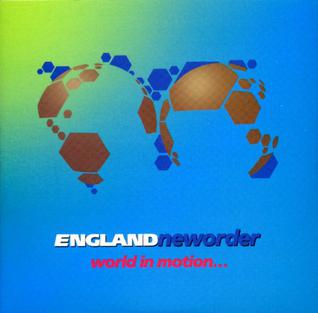
Source: Wikipedia
| Song | Release Date | UK Singles | UK # of Weeks on Chart | US Alternative Airplay | US Dance Club Songs | Spotify Listens* |
|---|---|---|---|---|---|---|
| World in Motion | May 21, 1990 | 1 | 23** | 5 | 10 | 14,198,431 |
**Charted for 12 weeks on initial release. Re-entered the charts in 2002, 2010, 2014 and 2018.
Side projects and Republic
Towards the end of the ’80s, the diverging musical interests of the four members of New Order led them to start exploring other projects on the side. Bernard Sumner had decided to record a solo synth pop album in late 1988, but he soon discovered working alone didn’t suit him and so he enlisted fellow Mancunian and friend Johnny Marr (formerly of The Smiths) to join him. The pair intended to only release music anonymously under the name Electronic. Neil Tennant of the Pet Shop Boys somehow heard about the collaboration and asked about joining the project too. Electronic’s first single, “Getting Away With It,” was released in December 1989 and became a hit in both the UK and US. Their debut album was recorded over the course of 1990 and was released in May 1991 to warm reviews and a #2 debut in the UK.
Meanwhile, Peter Hook formed a new band, Revenge, in 1989, which released an album One True Passion in 1990. Neither the album nor the singles charted, but Hook achieved his main goal: to behave on stage like a rockstar again. Stephen Morris and Gillian Gilbert formed their own side project called The Other Two and released a single “Tasty Fish” in 1991 that hit #41 in the UK and recorded a debut album called The Other Two & You which was set to be released that year on Factory Records.
However, Factory Records was in serious trouble by the early ’90s. Despite the success of New Order, Electronic and several Madchester bands on the label, the Hacienda was again losing money. Though the nightclub was incredibly popular, most attendees were spending their money on drugs and not at the bar. Crime in Manchester was escalating and the Hacienda, rightly or wrongly, became regarded as an epicenter for the city’s problems. The venue temporarily closed in 1991 to add additional security before it could re-open later that year. The label had also leased an extravagantly expensive loft space to be its headquarters.
In need of new revenue, the label hustled its two marquee bands back into the studio to record new albums. Happy Mondays had just had a smash hit with 1990’s Pills ‘n’ Thrills and Bellyaches (#4 in the UK, Platinum). Sent to Barbados to record the follow-up, the band spent exorbitant amounts of money with little to show for it. The resulting album, …Yes Please!, was a colossal failure upon release in September 1992.
As co-owners of the Hacienda, New Order was fully aware of the venue’s struggles. They were also owed money by Factory Records and worried that the label’s failure would mean they’d never be paid. So the foursome reunited in 1992 to record another studio album. Factory Records was actively seeking a buyer and was close to a deal with London Records to acquire the indie label. But Factory had no written contracts with its star band, New Order, and thus the band owned all of its material, leaving the label even less of an attractive acquisition. London backed away from the table and in November 1992, Factory declared bankruptcy.
New Order signed with London Records to release the new album they had been busy recording. Republic dropped in May 1993 and gave the band its second consecutive UK #1 and Gold-certified album. It also cracked the US Top 20, peaking at #11 and going Gold as well. London Records also picked up and released The Other Two’s debut album which had been stuck in limbo.

Source: Wikipedia
| Album | Release Date | UK Albums | UK # of Weeks on Chart | UK Sales | US Albums | US # of Weeks on Chart | US Sales | Producer |
|---|---|---|---|---|---|---|---|---|
| Republic | May 3, 1993 | 1 | 19 | Gold | 11 | 16 | Gold* | New Order & Stephen Hague |
Four singles were released off Republic. “Regret” is a highlight of the band’s career and probably the purest pop song they ever recorded. It peaked at #4 in the UK and became New Order’s highest charting single in the US at #28, while also topping the Alternative and Dance charts.
The other singles were the moody and less successful “Ruined in a Day“, the more upbeat and higher charting “World (The Price of Love)“, and the dance track “Spooky.”
Reviews for Republic were warm at the time, but the LP has become regarded as the end of the band’s creative peak and an album they wouldn’t have made if Factory Records weren’t facing bankruptcy. Peter Hook called “Regret” the only good thing to come out of the sessions.
With the record performing well in the US, New Order were obliged to tour. However, Sumner had soured on playing gigs, while Hook continued to thrive in a live setting. The band played only a handful of large venues in Europe and the US in July and August 1993, ending with a headlining set at the Reading Festival. It would be their last performance together for five years, as the foursome took an extended break from each other’s company and returned to their various side projects.

Source: Wikipedia

Source: Wikipedia

Source: Wikipedia

Source: Wikipedia
| Song | Release Date | UK Singles | UK # of Weeks on Chart | US Singles | US # of Weeks on Chart | US Alternative Airplay | US Dance Club Songs | Spotify Listens* |
|---|---|---|---|---|---|---|---|---|
| Regret | April 5, 1993 | 4 | 7 | 28 | 19 | 1 | 1 | 30,886,252 |
| Ruined in a Day | June 21, 1993 | 22 | 4 | – | 0 | 30 | – | 1,432,177** |
| World (The Price of Love) | August 23, 1993 | 13 | 5 | 92 | 4 | 5 | 1 | 2,816,721** |
| Spooky | December 6, 1993 | 22 | 4 | – | 0 | – | 6 | 517,250 |
**Combined streams of 7″ and Republic versions
Hiatus and Return
London Records, having just signed a band who wouldn’t work together anymore, turned to re-releasing the band’s catalogue. In 1994, they released (the best of) NewOrder, a singles collection that spanned the band’s entire career. Two singles were released along with the LP: a remixed 12″ version of “True Faith” titled “True Faith-94” (which gave New Order another Top 10 single) and “Nineteen63,” a remixed version of the original B-side to “True Faith.”
Emboldened by the success of the remixed singles, London Records followed up nine months later with the release of (the rest of) NewOrder, a compilation of remixed singles, some old and some newly commissioned for this release. “Blue Monday” was remixed by German electronic duo Hardfloor, titled “Blue Monday-95”, and released as a single again, peaking at #17 in the UK this time. The band’s US presence had completely evaporated, as none of the singles and neither of the compilations did much stateside.
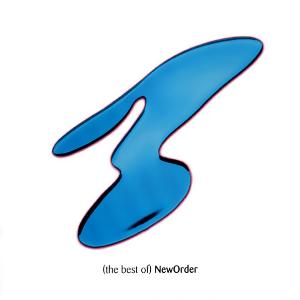
Source: Wikipedia
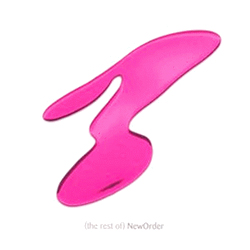
Source: Wikipedia
| Album | Release Date | UK Albums | UK # of Weeks on Chart | UK Sales | US Albums | US # of Weeks on Chart |
|---|---|---|---|---|---|---|
| (the best of) New Order | November 21, 1994 | 4 | 13 | Platinum | 78 | 5 |
| (the rest of) New Order | August 21, 1995 | 5 | 6 | – | – | 0 |
| Song | Release Date | UK Singles | UK # of Weeks on Chart | Spotify Listens* |
|---|---|---|---|---|
| Nineteen63 | January 9, 1995 | 21 | 4 | 228,820 |
Five years passed with the band not speaking to one another. Electronic released another album in 1996. Hook formed a new band, Monaco, whose album and singles found more UK success than Revenge did. Morris and Gilbert continued as The Other Two, contributing to UK TV soundtracks and starting a family. The Hacienda closed for good on June 28, 1997. “Video 5 8 6“, the 20-minute instrumental song that New Order played on May 21, 1982 when the club opened, was re-released as a CD single in September and made the UK charts for a week.
| Song | Release Date | UK Singles | UK # of Weeks on Chart | Spotify Listens* |
|---|---|---|---|---|
| “Video 5 8 6“ | September 22, 1997 | 81 | 1 | 12,828 |
In January 1998, New Order’s manager Rob Gretton floated the idea of a reunion to the original foursome, all of whom responded positively. A performance at the Phoenix Festival was originally scheduled but the festival was cancelled. Instead they played a warm-up show in their hometown of Manchester in July and then headlined another night at the Reading Festival in August 1998. At the end of the year they played Manchester again and then London. The following May, Gretton died of a heart attack at age 46.
Having enjoyed their time back together, New Order started writing new material together and returned to the studio in 2000. Although electronic dance music had become even more popular in the intervening years—with acts like The Prodigy, The Chemical Brothers and Fatboy Slim enjoying massive chart success—the Alternative Dance pioneers chose to write their most rock-focused album since their Joy Division days. Famous friends Bobby Gillespie and Andrew Innes (of Primal Scream) and Billy Corgan (of the Smashing Pumpkins) guested on two tracks. Lead single “Crystal” peaked at #8, while follow-up “60 Miles an Hour” made it to #29.
Get Ready was generally well received by critics and gave New Order another Top 10 and Gold-certified album in the UK. More importantly, Sumner and Hook seemed to be getting along again. Surprisingly, Gillian Gilbert would be the one to bow out of the band, opting to stay at home and take care of her and Morris’s kids. Phil Cunningham joined the band on keyboards/guitars as they embarked on a 12-month world tour in July 2001.

Source: Wikipedia
| Album | Release Date | UK Albums | UK # of Weeks on Chart | UK Sales | US Albums | US # of Weeks on Chart | Producer |
|---|---|---|---|---|---|---|---|
| Get Ready | August 27, 2001 | 6 | 6 | Gold | 41 | 5 | Steve Osborne, New Order, Flood, Bernard Sumner |
| Song | Release Date | UK Singles | UK # of Weeks on Chart | US Dance Club Songs | Spotify Listens* |
|---|---|---|---|---|---|
| Crystal | August 13, 2001 | 8 | 8 | 1 | 19,843,674** |
| 60 Miles an Hour | November 19, 2001 | 29 | 2 | – | 5,523,566** |
**Combined streams of Get Ready and radio edit versions
New Order’s return coincided with a period of nostalgic acclaim for the Manchester music scene. Michael Winterbottom’s 2002 film, 24 Hour Party People, dramatized the story of Factory Records and its bands from the late 1970s to the early 1990s. The film was a hit with critics and played the Cannes Film Festival. Sumner, Hook, and Morris are portrayed throughout, along with Tony Wilson, Ian Curtis, Rob Gretton, Martin Hannett and others. New Order contributed a new song, “Here to Stay,” to the film which plays over the end credits. The song was included on the film’s soundtrack album and gave the band another Top 20 single.

Source: Wikipedia
| Song | Release Date | UK Singles | UK # of Weeks on Chart | Spotify Listens* |
|---|---|---|---|---|
| Here to Stay | April 15, 2002 | 15 | 3 | 1,393,215 |
New Order returned to the studio in 2003 to record another album, their first to be written and recorded without Gilbert and with Cunningham. This time around they leaned back into the Alternative Dance territory that made them legends, working with successful producers John Leckie (The Stone Roses), Stephen Street (Blur) and Stuart Price (Madonna). Waiting for the Sirens’ Call was released in March 2005, again peaking in the Top 10. Singles “Krafty” and “Jetstream” charted well in the UK and on the US Dance Club Songs chart. However, the album didn’t sell as well as earlier ones, and reviews were lukewarm. Most felt that musically New Order was out of new ideas. The two singles were the last of the band’s to chart.

Source: Wikipedia
| Album | Release Date | UK Albums | UK # of Weeks on Chart | UK Sales | US Albums | US # of Weeks on Chart | Producer |
|---|---|---|---|---|---|---|---|
| Waiting for the Sirens’ Call | March 28, 2005 | 5 | 8 | Silver* | 46 | 4 | New Order, John Leckie, Stephen Street, Stuart Price |
| Song | Release Date | UK Singles | UK # of Weeks on Chart | US Dance Club Songs | Spotify Listens* |
|---|---|---|---|---|---|
| Krafty | March 7, 2005 | 8 | 5 | 2 | 4,284,598** |
| Jetstream | May 16, 2005 | 20 | 4 | 3 | 803,055** |
**Combined streams of Waiting for the Sirens’ Call and radio edit versions
At the NME Awards that year, Sumner, Hook and Morris collected lifetime achievement “Godlike Geniuses” awards for their work in both Joy Division and New Order. London Records decided it was time to put out another greatest hits compilation. For Singles, the band focused on their 7″ singles for the first time, collecting all their A-Sides from 1981-2005. Although an excellent compilation, it was far from necessary in the public’s view. Peaking at #14, Singles became the lowest charting New Order major release in the UK since Movement.

Source: Wikipedia
| Album | Release Date | UK Albums | UK # of Weeks on Chart | UK Sales |
|---|---|---|---|---|
| Singles | October 3, 2005 | 14 | 16 | Gold* |
Break-up and Reformation
By late 2006, Peter Hook was speculating about the end of the band, telling the Argentinean press while on tour there “this might be our last concert ever.” In May 2007, Hook went on a Manchester radio show and said, “me and Bernard aren’t working together,” and soon posted confirmation that New Order had split up on his MySpace page. Sumner and Morris responded with a statement to the press saying, “After 30 years in a band together, we are very disappointed that Hooky has decided to go to the press and announce unilaterally that New Order have split up. We would have hoped that he could have approached us personally first. He does not speak for all the band, therefore we can only assume he no longer wants to be a part of New Order.”
Despite the public assurances, Sumner soon was saying he wouldn’t be making any more music as New Order. In 2008, Sumner and Phil Cunningham formed a new band, Bad Lieutenant, along with Jake Evans. Stephen Morris played drums on a couple tracks of the band’s album, while Blur‘s Alex James played bass on a few more. Released in 2009, the LP peaked at #70 in the UK. For the band’s tour, Morris played drums and Tom Chapman joined on bass.
Peter Hook began writing memoirs of his eventful life, publishing the first, The Hacienda: How Not to Run a Club in 2010, followed by Unknown Pleasures: Inside Joy Division in 2012.
There was one compilation idea that hadn’t exploited yet: putting Joy Division and New Order songs together. Total: From Joy Division to New Order fixed this oversight. Nobody really cared and the compilation didn’t even make the Top 50 in the UK.

Source: Wikipedia
| Album | Release Date | UK Albums | UK # of Weeks on Chart | UK Sales |
|---|---|---|---|---|
| Total: From Joy Division to New Order | June 6, 2011 | 51 | 2 | Gold* |
Whether it had to do with Total or not, Sumner decided to put Bad Lieutenant aside and reform New Order with Morris and Cunningham. Gillian Gilbert also returned from her hiatus and the band drafted Tom Chapman to replace Hook on bass. After a few gigs in late 2011, New Order spent most of 2012 touring the world, including supporting Blur at a special Hyde Park concert to coincide with the closing of the London Olympics.
During the recording sessions for Waiting for the Sirens’ Call, the band had laid down several additional tracks that didn’t make the 2005 LP. These were unearthed and released as Lost Sirens in 2013, which landed on the UK charts for a single week. The songs were all credited to Sumner, Hook, Morris and Cunningham, the line-up at the time of recording. Leadoff track “I’ll Stay With You” was included on the 2016 re-release of the Singles compilation.

Source: Wikipedia
| Album | Release Date | UK Albums | UK # of Weeks on Chart | Producer |
|---|---|---|---|---|
| Lost Sirens | January 14, 2013 | 23 | 1 | Tore Johansson, New Order, Stuart Price, Mac Quayle, Jim Spencer, Stephen Street |
| Song | Spotify Listens* |
|---|---|
| I’ll Stay With You | 1,965,765 |
The new 5-piece line-up of New Order signed with new label Mute Records and recorded their tenth album, Music Complete. Released in September 2015, the album returned New Order to success and acclaim, peaking at #2 in the UK and going Silver. It also landed on Best of the Year lists from NME and The Guardian.
Though none of the singles charted, “Restless” and “Tutti Frutti” show a band reinvigorated and enjoying making music together again—as much as New Order ever sound to be enjoying anything.
Source: Wikipedia
| Album | Release Date | UK Albums | UK # of Weeks on Chart | UK Sales | Producer |
|---|---|---|---|---|---|
| Music Complete | September 25, 2015 | #2 | 16 | Silver | New Order, Stuart Price, Tom Rowlands |
| Song | Release Date | Spotify Listens* |
|---|---|---|
| Restless | July 29, 2015 | 5,890,479** |
| Tutti Frutti | October 19, 2015 | 6,409,600** |
**Combined streams of Music Complete and single versions
Peter Hook sued his former bandmates in November 2015, alleging they were squeezing him out of millions of pounds of royalties. In September 2017, the parties settled the lawsuit for an unspecified amount. Bernard Sumner got into the autobiography game with Chapter and Verse – New Order, Joy Division and Me, published in 2014. Hook also published a third memoir, Substance: Inside New Order, in 2016.
Meanwhile, the Hook-less New Order, who once were indifferent to or even resistant to playing live, have become a perennial touring draw. Since reforming in late 2011, the band has toured the world for several months every year, playing Europe, North America and South America regularly. They were on tour in Australia in March 2020 when the Covid-19 pandemic shut down the world. Six months later, they released their first new single in five years, “Be a Rebel.”

Source: Wikipedia
| Song | Release Date | Spotify Listens* |
|---|---|---|
| Be a Rebel | September 8, 2020 | 1,313,065 |
A video of the band’s 2018 performance at London’s Alexandra Palace was released in February 2021, titled Education Entertainment Recreation. In September, with Covid-19 restrictions easing, New Order began playing live again. A band born out of tragedy continues to soldier on.
Timelines
Click on a chart to enlarge the image.
Members
Albums
Singles
Sources
http://www.neworder.com/newordernow/2018/12/19/movement-definitive-edition.html
https://www.theguardian.com/culture/2013/feb/11/how-we-made-blue-monday
https://www.theguardian.com/music/2007/may/10/news.neworder
https://www.theguardian.com/music/2011/jul/14/new-order-split-peter-hook